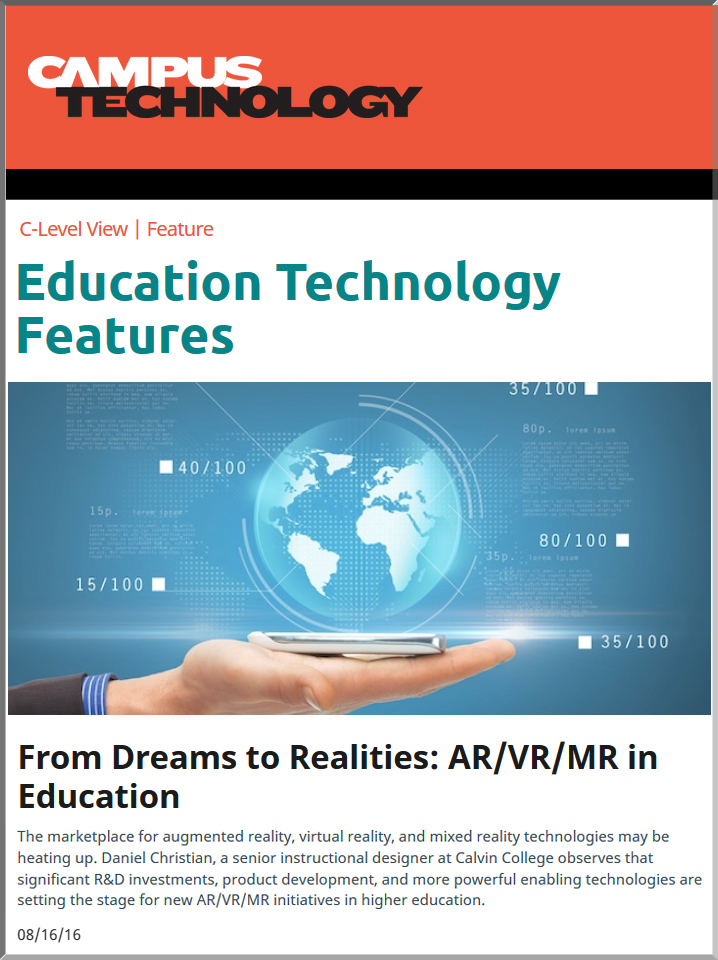From Dreams to Realities: AR/VR/MR in Education | A Q&A with Daniel Christian — from campustechnology.com by Mary Grush; I’d like to thank Jason VanHorn for his contributions to this article
Excerpt:
Grush: Is there a signpost you might point to that would indicate that there’s going to be more product development in AR/VR/MR?
Christian: There’s a significant one. Several major players — with very deep pockets — within the corporate world are investing in new forms of HCI, including Microsoft, Google, Apple, Facebook, Magic Leap, and others. In fact, according to an article on engadget.com from 6/16/16, “Magic Leap has amassed an astounding $1.39 billion in funding without shipping an actual product.” So to me, it’s just not likely that the billions of dollars being invested in a variety of R&D-related efforts are simply going to evaporate without producing any impactful, concrete products or services. There are too many extremely smart, creative people working on these projects, and they have impressive financial backing behind their research and product development efforts. So, I think we can expect an array of new choices in AR/VR/MR.
…
Just the other day I was talking to Jason VanHorn, an associate professor in our geology, geography, and environmental studies department. After finishing our discussion about a particular learning space and how we might implement active learning in it, we got to talking about mixed reality. He related his wonderful dreams of being able to view, manipulate, maneuver through, and interact with holographic displays of our planet Earth.
When I mentioned a video piece done by Case Western and the Cleveland Clinic that featured Microsoft’s Hololens technology, he knew exactly what I was referring to. But this time, instead of being able to drill down through the human body to review, explore, and learn about the various systems composing our human anatomy, he wanted to be able to drill down through the various layers of the planet Earth. He also wanted to be able to use gestures to maneuver and manipulate the globe — turning the globe to just the right spot before using a gesture to drill down to a particular place.









